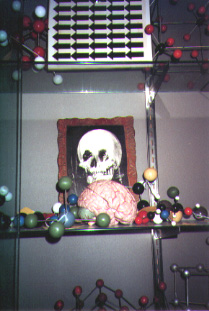PART 6: Plato’s Allegory of the Cave, the Transcendence of the human brain and what’s left of “the urge to love” |
|||
| Section 2: The transcendence of the brain and the Ambiguity of the Human Experience | |||
Photo by Rachel Berman
|
|||
| What I tried to do as I constructed this project and chose the various “systems” of examination, is to broaden out interbrain interactions and set a larger context in which an abstract concept such as love can be discussed. So lets give it a try! | |||
| We saw in Part 1, the chemical affects on “the urge to love.” Drugs, such as ecstasy, have a profound effect on one’s ability to feel love. In the opening poem, the author alludes to “the urge to being and to be love” was thought of as being “all at once altogether the same” (hence the title of this project: the “NATURE” of desire…I added the quotation marks around the word NATURE later on in my work!). | |||
| In context of what we discussed, the “urge to love” is the same in people to the extent that we have certain areas of the brain which are put together in such a way that they produce our “urge to love.” However, if something is damaged in the morphology of these sites, one may lose “the urge to love” (think back to the case of autism). | |||
| I don’t like to use the word “damaged” here because it is entirely possible to imagine another brain organization in which “the urge to love” is replaced by something else or is not there at all. We saw in Part 4 that the particular brain organization, which the evolutionary sequences produced, is such that “the urge to love” makes us feel good. And that is, I am convinced, one of the driving forces of the human race and is enough for “the urge to love” to persist in evolutionary history. | |||
| As we
saw in Part 5, one of
the aspects of the human condition is the “dialogue” between the I function and the unconscious part of the brain
that is manifested in the dream state. The brain, as a whole, is influenced by the genome,
the experiences you have, and the stuff the brain
makes up.
|
|||
| As a result of this interaction, a picture in your head is conjured up. This can be how you view the world, yourself, and others. The brain through the internal dialogue can use itself as the subject of exploration and that journey is quite unique and empowering. | |||
| Also, my talk of the interbrain connections does not reflect the materialistic ideology in its strictest sense. Materialists hold that there are molecules and brain states that can be captured through the physical (this was my original view I alluded to in The Introduction). I can go as far as saying that love may be a brain state but | |||
|
|||
| Maybe an example will help unravel what I mean here: | |||
| Say we copy the brain arrangement of a person identically. At the copy time the experiences would be identical. However, they would soon start to diverge yielding to two people with progressively different internal experiences. This is because the interaction of the atoms of the brain may be indeterminate. So it is likely to be the case that | |||
|
|||
| Even if we except that there is nothing more than the physical arrangement of our being we still have to worry about “aboutness” which Kramer brings up. That is what the brain produces as the result of the internal dialogue and its interaction with “outside” experiences. This aboutness does not disappear and leads to ambiguity/indeterminacy of the human experience. | |||
| So, the brain can be thought of as a painter who can paint a gloomy picture due to the likely confusion that this ambiguity produces. But it is also capable of utter beauty that is so often manifested in the “urge of love." | |||
|
|||

